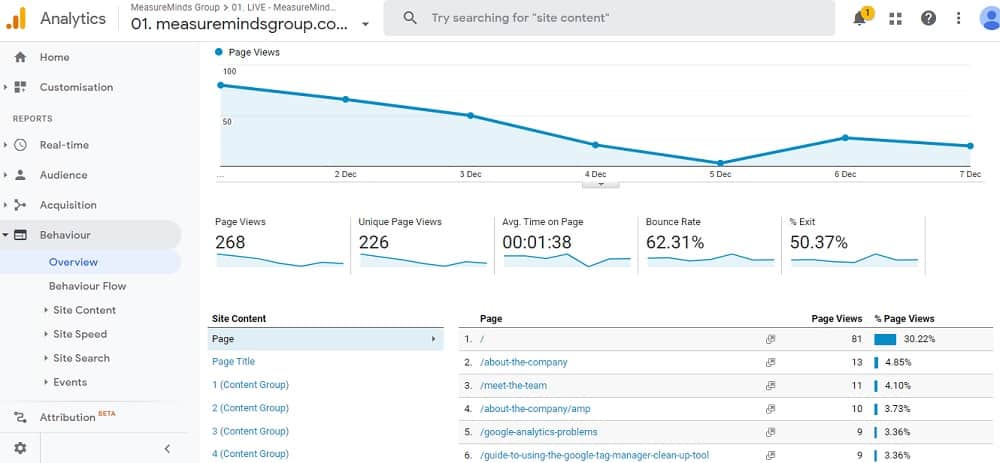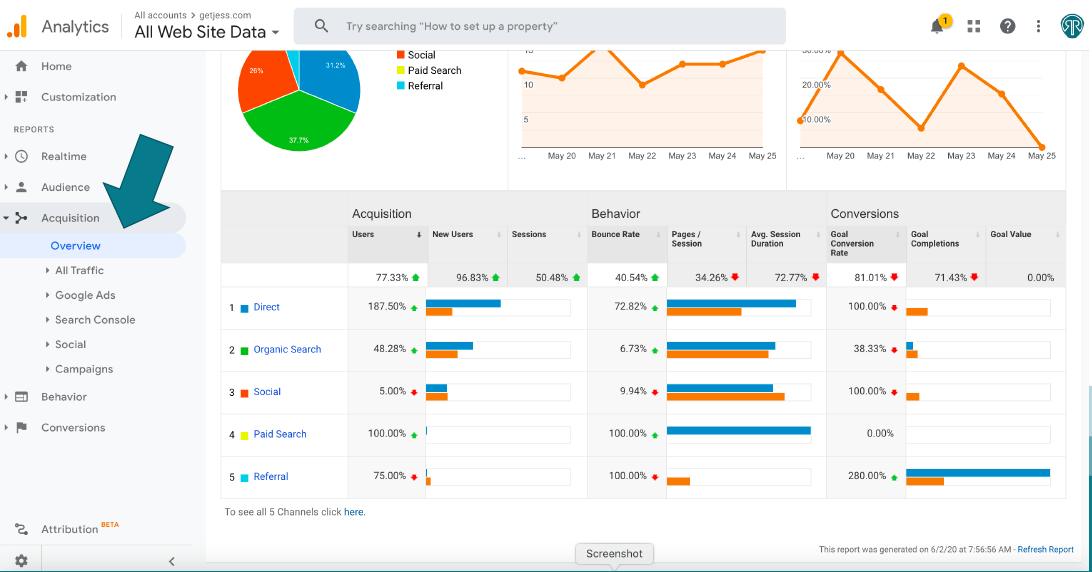Master Site Insights With Accurate Google Analytics Tracking Code
The reliable application of Google Analytics pivots on the accurate execution of its tracking code, an essential step typically overlooked by website proprietors. This apparently easy JavaScript snippet, when properly positioned, becomes the backbone of information collection, giving understandings right into individual habits and website performance. However, challenges can arise throughout arrangement, possibly skewing the data and leading to misinformed choices. Recognizing these complexities is vital for taking full advantage of the benefits of analytics. What are the usual pitfalls that could threaten your tracking initiatives, and exactly how can you guarantee accuracy in your technique?
Comprehending Google Analytics Essentials
Google Analytics is a vital tool for web site owners and marketing experts, providing important insights into user habits and web site efficiency. At its core, Google Analytics collects data about site visitors to a website, permitting users to examine metrics such as web traffic resources, user interaction, and conversion rates. Comprehending these basics is essential for optimizing an internet site's efficiency and boosting individual experience.
The system uses cookies to track interactions, videotaping data such as page views, session periods, and bounce rates. This information is aggregated and provided via customizable dashboards, allowing users to picture fads with time. Key efficiency signs (KPIs) can be checked, such as the complete variety of users, new versus returning visitors, and the geographic distribution of the audience.
Furthermore, Google Analytics provides segmentation attributes, permitting customers to separate specific traffic sources or user demographics for even more targeted evaluation. By mastering these foundational elements, internet site owners can make informed choices about content method, advertising and marketing campaigns, and total website improvements. Eventually, recognizing Google Analytics fundamentals is necessary for leveraging information to drive growth and achieve business purposes properly.
Establishing Your Tracking Code

Replicate the given monitoring code and paste it into the HTML of your site. This makes sure that the tracking code lots before any kind of various other content, allowing it to catch information precisely.
After installation, confirm that the tracking code is functioning appropriately by using Google Tag Aide or the Real-Time records in Google Analytics - when does the google analytics tracking code send an event hit to analytics?. This action is necessary to verify that your data collection is energetic and exact, setting the structure for insightful evaluation
Typical Tracking Code Issues
This may occur when the tracking code is put in the incorrect section of the internet site's HTML, frequently leading to insufficient or absent information. In addition, having multiple circumstances of the monitoring code on a solitary page can result in inflated metrics, as individual interactions could be counted more than when.
An additional problem arises from using advertisement blockers, which can protect against the tracking code from implementing altogether, thus skewing data. when does the google analytics tracking code send an event hit to analytics?. Additionally, failing to set up filters correctly can result in the exclusion of crucial traffic sources or the addition of unwanted recommendation spam, misshaping the data gathered
Website owners may additionally neglect the significance of tracking code updates, particularly when moving to Google Analytics 4 (GA4) from Universal Analytics. Finally, inadequate testing before launching modifications can lead to unnoticed errors in the tracking code, additionally complicating data reliability. Resolving these usual concerns is crucial for ensuring exact monitoring and informative analytics.
Analyzing Website Information Properly
Exact data collection is only the primary step in leveraging Google Analytics; the actual worth lies in properly examining that data to drive enlightened decision-making. To achieve this, it is vital to recognize vital efficiency indications (KPIs) that straighten with your service goals. Emphasis on metrics such as conversion rates, user involvement, and traffic resources, as these will provide understandings into user habits and the general effectiveness of your internet site.
Using Google Analytics' division functions allows for a much deeper understanding of your target market. By damaging down information into certain demographics, behaviors, and website traffic networks, you can reveal patterns and patterns that educate targeted strategies. Implementing personalized reports and control panels can streamline this process, making it possible for quick access to pertinent information.
Additionally, routinely assessing data fads in time aids to recognize anomalies and possibilities for improvement. Use visualization devices to present information in a conveniently absorbable format, facilitating extra reliable communication with stakeholders. Inevitably, the capability to assess site information effectively empowers services to make strategic decisions that enhance user experience, enhance marketing efforts, and drive growth.

Best Practices for Accurate Monitoring
Executing efficient tracking techniques is vital for acquiring dependable data in Google Analytics. To make sure accurate monitoring, start by properly setting up the Google Analytics tracking code on every page of your website. This can be accomplished with a tag manager or by straight embedding the code into the HTML.
Following, configure your Google Analytics account to exclude inner website traffic. This can be done by establishing filters that recognize and remove check outs from your company's IP address, thus protecting against skewed data. Furthermore, make use of event tracking to keep an eye on particular individual communications, such as downloads or video plays, which conventional web page sights might overlook.
On look what i found a regular basis investigate your tracking setup to confirm that all features, such as goals and ecommerce monitoring, are operating properly. Develop a consistent naming convention for your campaigns and events to facilitate simpler reporting and evaluation.
Finally, consider leveraging UTM parameters for campaigns to acquire understandings right into the efficiency of various advertising and marketing efforts. By complying with these finest methods, you can improve the accuracy of your information collection and analysis, ultimately causing even more enlightened decision-making for your website.
Conclusion
Accurate execution of the Google Analytics tracking code is necessary for mastering internet site understandings. By making certain the monitoring code is properly put and on a regular basis investigated, site owners can capture essential customer interaction data, therefore promoting the recognition of essential performance signs. Efficient analysis of this information, integrated with adherence to best methods, enables educated decision-making and the optimization of on the internet strategies. Ultimately, a durable useful link tracking structure improves over here the capability to drive engagement and boost overall internet site performance.

Inadequate testing prior to introducing modifications can result in unnoticed errors in the tracking code, better complicating data integrity.Applying efficient tracking methods is critical for getting reliable information in Google Analytics. By ensuring the monitoring code is correctly positioned and frequently audited, internet site proprietors can capture crucial individual interaction information, thus promoting the identification of essential efficiency signs.